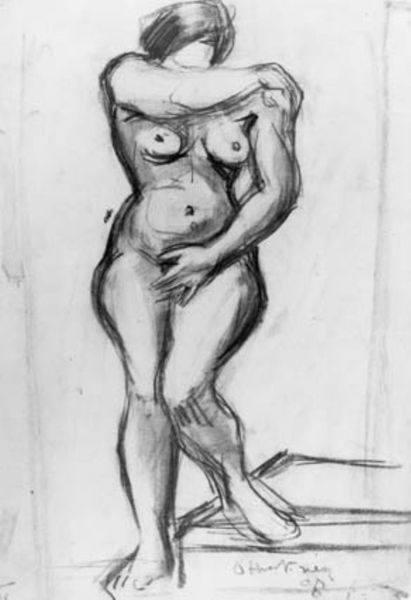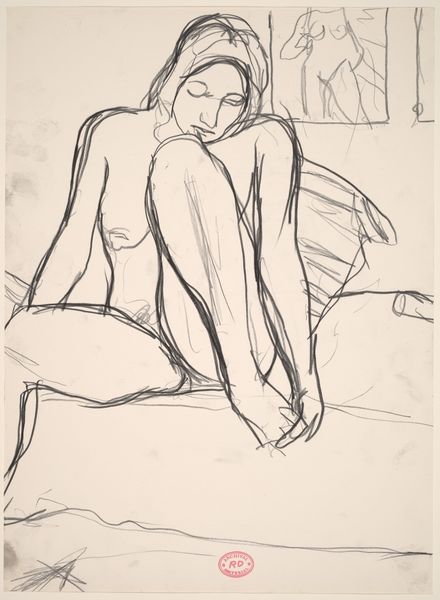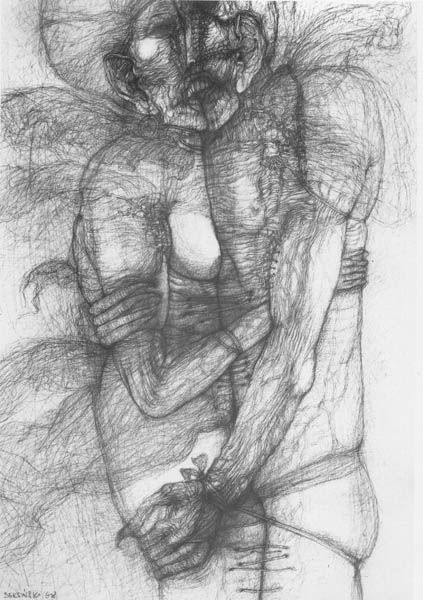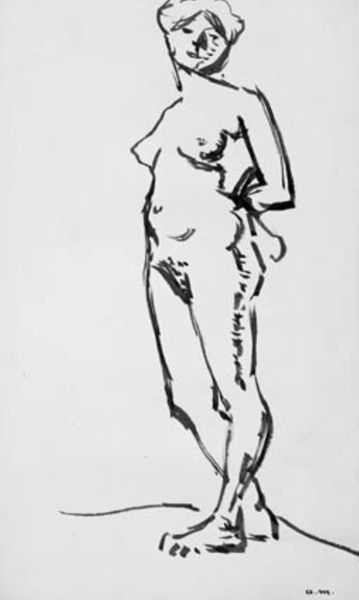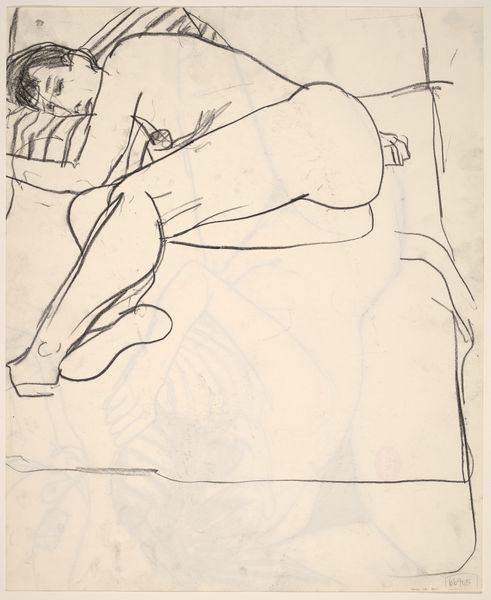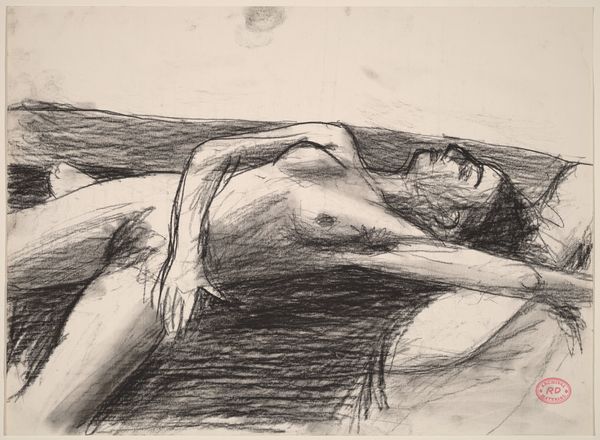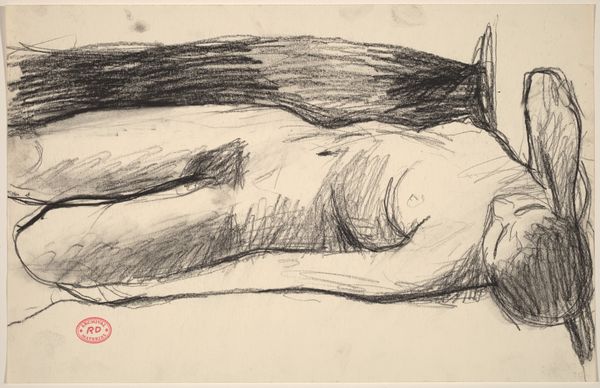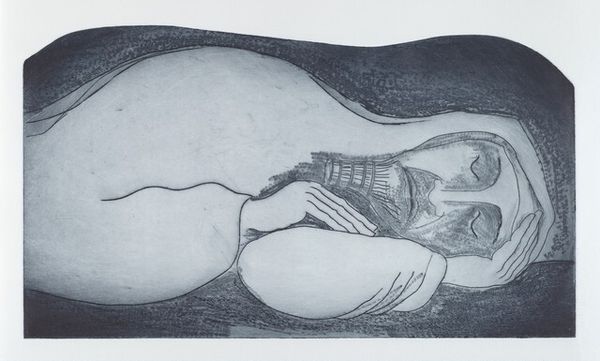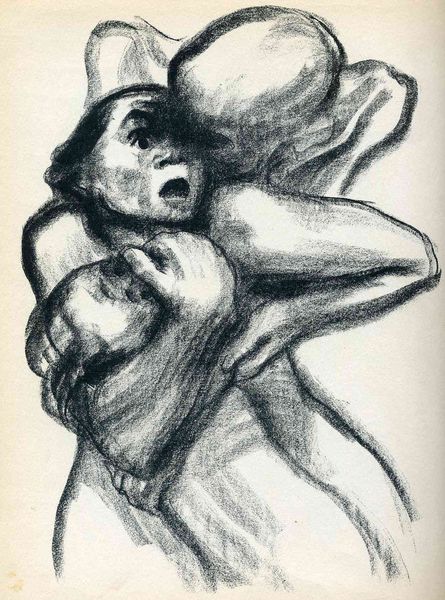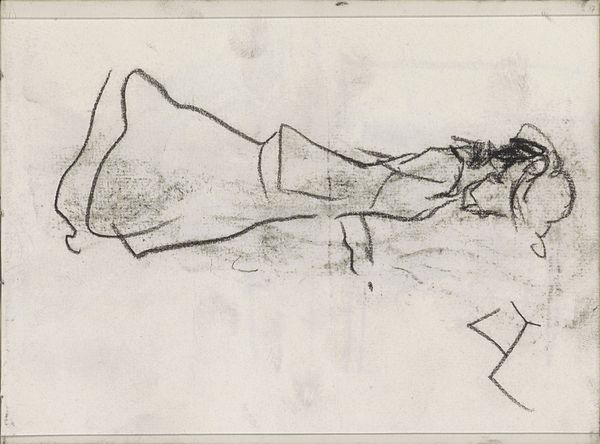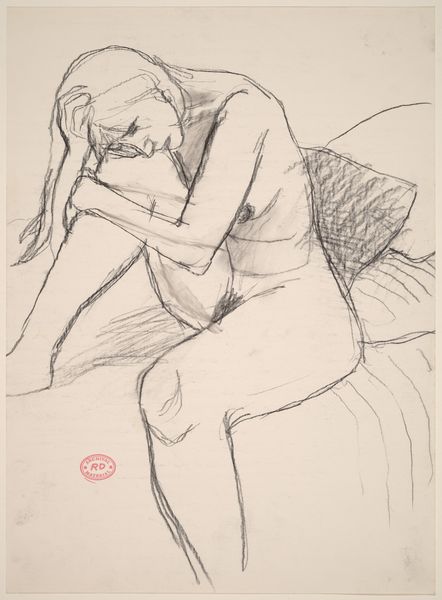
Dimensions: 142 mm (height) x 218 mm (width) (bladmaal)
Editor: We're looking at "Liggende kvindelig model," or "Reclining Female Model," by Othon Friesz, created between 1906 and 1909. It’s a drawing held at the SMK. The energy in the lines feels almost frantic, yet the pose seems so languid. What jumps out at you when you see it? Curator: What immediately strikes me is the confluence of styles present here, caught between the Impressionist impulse and the burgeoning modernist movements. Friesz was operating in a rapidly changing art world, influenced by post-impressionist styles. How does the image reflect, or perhaps resist, the institutional norms surrounding the depiction of the nude at that time? Editor: I hadn’t thought about it as resisting norms, but now I see what you mean. The sketch-like quality feels very personal, almost like a private study, which might subvert the traditional idealized nude meant for public display. Curator: Exactly. Friesz uses this very traditional subject, the reclining nude, which historically served very particular social functions. Consider the legacy of academic painting, which the Impressionists and those that followed actively sought to dismantle. Friesz seems to acknowledge the academic, while actively playing with that visual language. How might the availability and cost of models played a part in drawings taking place within classrooms, studies, or private homes, as opposed to gallery works? Editor: So, is it the very nature of the medium, the drawing itself, that grants Friesz a certain freedom or license to experiment with form and representation? Curator: Precisely. Also, look at how the loose lines and the lack of idealization affect how we, the viewers, engage with the subject matter. The drawing almost refuses to be monumental. Editor: It’s amazing how much context influences what we see in a piece. I initially just saw a simple sketch. Curator: And now you recognize a whole dialogue, playing out in ink. Understanding that history lets us understand art's place in society more deeply.
Comments
No comments
Be the first to comment and join the conversation on the ultimate creative platform.
